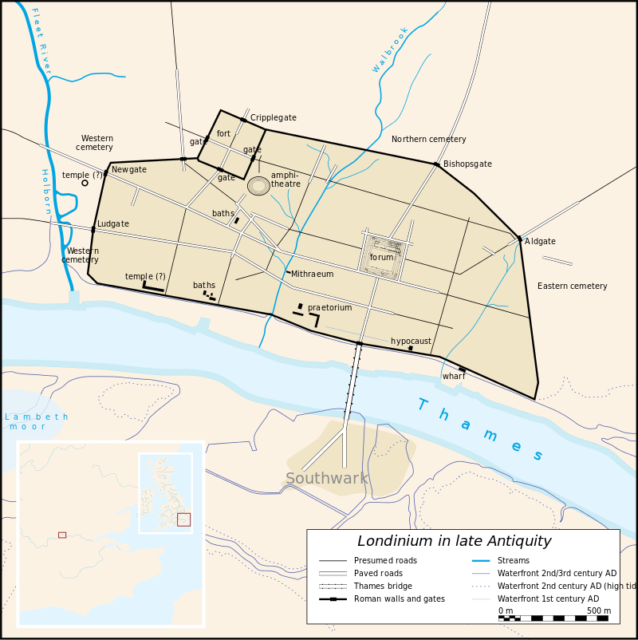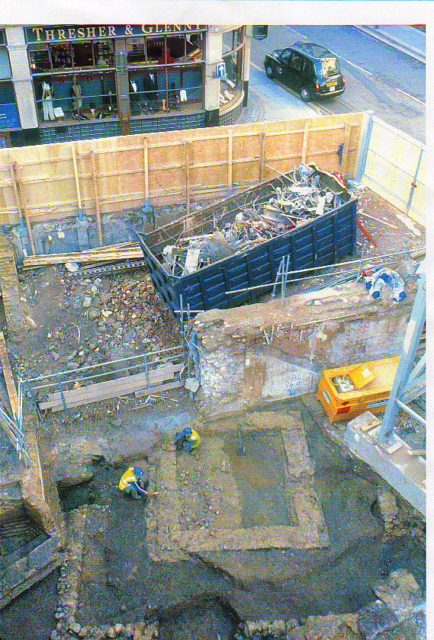London has always been a multicultural city, but it seems scholars never realized how early the many different peoples of the world were making an impact on British life. A recent discovery in an ancient Roman cemetery in Southwark, south of the River Thames, has led archeologists to believe that visitors from Africa, the Mediterranean area, and surprisingly, Asia, were already present in Roman times.
The city of Londinium was established by the Romans about 43 A.D when Aulus Plautius, the commander of the Roman invasion troops, had his men build a bridge over the River Thames to enable his troops to move quickly across the English countryside. The settlement that sprouted up near the new bridge quickly became an important trading center for boats traveling up and down the Thames.

About halfway into the second century A.D., Londinium had one of largest town halls in the world, a temple, bathhouses, and a governor’s palace. The Romans established a government that included members of the tribes that were conquered in the invasion. The growth of established towns was encouraged by the Romans and inhabitants were left to design the towns to their own specifications rather than to a rigid Roman system. New towns were created in lowland areas previously shunned by inhabitants due to fear of flooding and invasion. Some of these towns were surrounded by walls to ward off potential raiders and almost all had a central civic center to conduct business and establish merchant assemblies. The newly created towns also had public baths which doubled as meeting places.
The Romans built over five thousand miles of roads in England to connect the towns, which created great opportunities for trade and commerce. Roman wine, pottery, and jewelry were imported from Italy, and the Britons exported grain, cattle, and ore to the European continent. They also established a mail service and inns along the roads to enable relay riders to carry letters and packages across the island with speed and efficiency.
This massive increase of trade and commerce seems to have attracted visitors from all over the world, as evidenced in the exhumation of the bodies in the Roman graveyard in Southwark. Of the twenty-two bodies found and studied, five sets of remains were shown to have originated in the Mediterranean area, four are believed to be African remains, and two have shown evidence that they probably originated in China.
Rebecca Redfern, curator of Human Osteology at the Museum of London, told BBC Radio, “This is absolutely phenomenal! This is the first time in Roman Britain that we’ve identified people with Asian ancestry.”
An article published the October issue of the Journal of Archaeological Science detailing the findings of the exhumation states, “The expansion of the Roman Empire across most of Western Europe and the Mediterranean led to the assimilation and movement of many ethnically and geographically diverse communities. Many people traveled, often vast distances, for trade or because of their occupation, for example in the military, or their social status, for example if they were enslaved.”
The Han Dynasty and the Roman Empire were both at their cultural peak at the time the bodies were buried which leads researchers to believe that international trade was much more advanced than originally believed.

Why the early Asians were in England at the time has not yet been determined. According to Redfern, “At this point in time Britain is on the very margins of the Roman Empire. It isn’t a very glamorous or exciting place that people actually want to visit, so trying to find a reason for them to come is really quite difficult. They may have been members of the military. They could have been merchants. They could have been economic migrants. They could have been enslaved.”
The team plans more laborious testing of DNA and examination of the skeletons which will hopefully answer these questions and provide even more insight into the Roman occupation of England.
